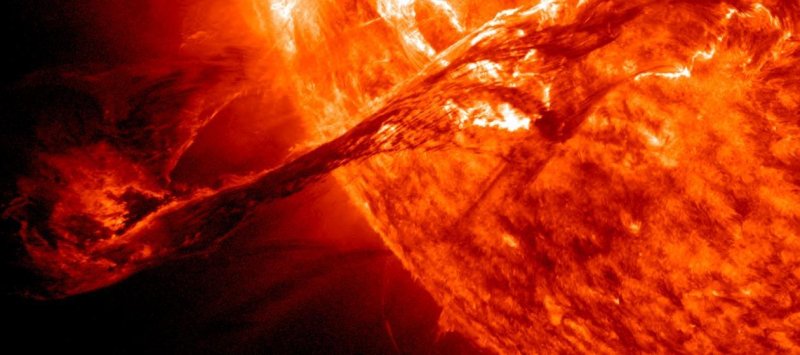Gigantic solar storms may have helped strip unwanted gases from the Earth’s atmosphere, while helping to seed its surface with the chemicals for life, scientists say. The storms may also have set in motion chemical reactions that helped keep the Earth and Mars warm enough for liquid water early in their histories, when the Sun was putting out 30 percent less energy than it is today.
…
[T]he early Earth might have swept up enough hydrogen and helium during its formation to have had a fairly substantial hydrogen/helium “envelope” that would have been “inimical” to habitability. If it had remained, [astrophysicist Vladimir Airapetian] says, the Earth might have become a gaseous “mini-Neptune,” rather than the planet we know today.Lower down, radiation from solar superstorms could have set off cascades of collisions that would have smashed molecules and left a wake of ionized particles extending deep into the atmosphere, says NASA researcher Guillaume Gronoff. Of particular importance, he says, is that these particles would have carried enough energy to break up molecules of nitrogen gas, carbon dioxide, water, and methane.
…
Many of the exoplanet systems currently being studied, however, are around stars that generate considerable numbers of flares. That means that conditions on their planets might be more like those on the early Earth than in our present Solar System.
Read full, original post: Solar superstorms may have helped set stage for life































